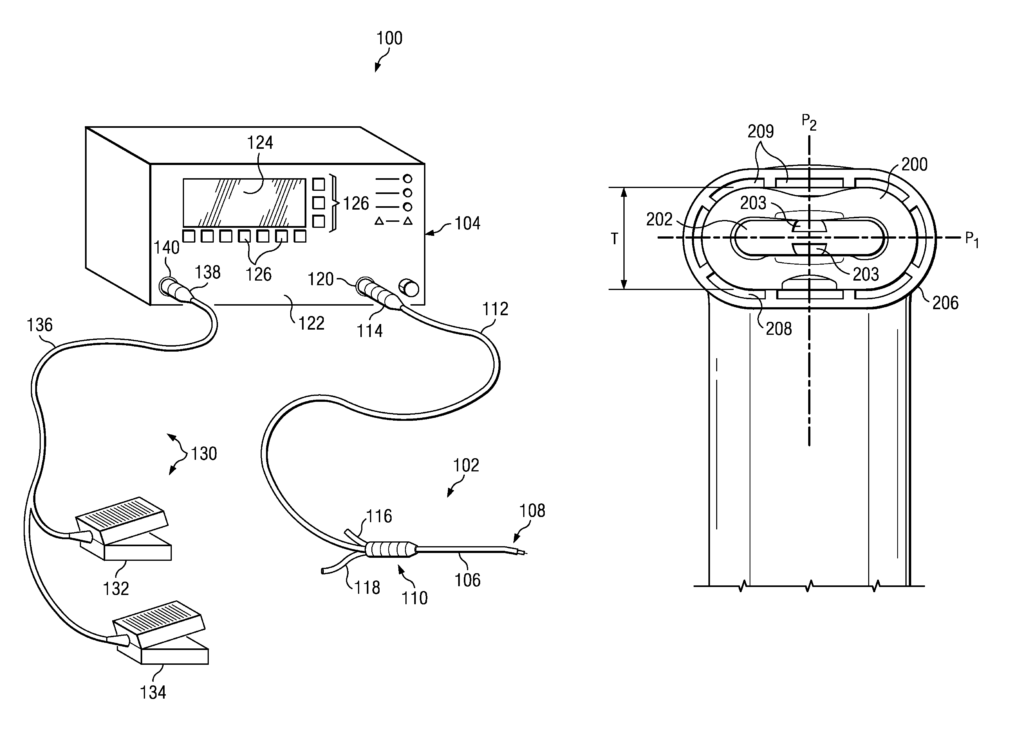Precision Electrosurgery for Delicate Procedures
Introduction
This fine dissection electrosurgical device provides surgeons with the precision needed for complex and delicate procedures, offering enhanced control over tissue dissection while minimizing damage to surrounding areas. The device enables targeted, high-frequency electrical currents to cut through tissue with remarkable accuracy, making it ideal for surgeries requiring fine dissection, such as neurosurgery, vascular surgery, or certain laparoscopic procedures. For medical device companies, this technology offers the opportunity to advance surgical tools that cater to the increasing demand for minimally invasive techniques.
The Challenge: Precision in Electrosurgical Dissections
Surgical procedures, especially in sensitive areas like the brain or vascular system, require exceptional precision to avoid damaging critical structures. Traditional electrosurgical tools often lack the finesse needed for such delicate tasks, which can lead to unintended tissue damage or less-than-ideal patient outcomes. Surgeons are looking for devices that give them more control and precision, reducing the risk of complications while improving the effectiveness of the procedure. As minimally invasive surgeries become more common, the need for more advanced surgical devices has grown.
Electrosurgical Device for Fine Dissection
This electrosurgical device solves these challenges by offering a highly refined tool that enables fine dissection with minimal collateral damage. Its unique design delivers focused energy to the target tissue, allowing surgeons to make precise cuts and control bleeding simultaneously. The device’s ability to provide controlled dissection makes it an essential tool for surgeries in sensitive areas where even minor errors can have significant consequences. It also supports minimally invasive approaches, allowing surgeons to perform complex operations through smaller incisions, leading to faster patient recovery times and fewer complications.
Key Benefits for Medical Device Manufacturers and Surgeons
For medical device companies, this technology provides an opportunity to introduce a next-generation electrosurgical tool that improves surgical outcomes and aligns with the growing trend of minimally invasive procedures. Surgeons will benefit from enhanced control during delicate dissections, allowing them to perform more precise operations while reducing risks to patients. Healthcare providers can offer better patient care by incorporating advanced surgical tools that ensure more accurate, safer, and effective procedures.
Invest in Advanced Surgical Precision
Licensing this precision electrosurgery device technology positions your company as a leader in surgical innovation. By offering a device that improves fine dissection and enhances surgical control, your business can meet the rising demand for safer, more effective surgical procedures. This technology offers a smart investment for companies focused on advancing healthcare outcomes and providing cutting-edge surgical tools.

- Abstract
- Claims
What is claimed is:
1. An electrosurgical wand comprising:
16. A system comprising:
an electrosurgical wand coupled to the electrosurgical controller, the electrosurgical wand comprising:
27. A method comprising:
31. An electrosurgical wand comprising:
34. An electrosurgical wand comprising:
35. An electrosurgical wand comprising:
37. A system comprising:
an electrosurgical wand coupled to the electrosurgical controller, the electrosurgical wand comprising:
Share
Title
Fine dissection electrosurgical device
Inventor(s)
Doug Evans, Michael D. Foster, Philip M. Tetzlaff, Rajitha Aluru, Jean Woloszko, Johnson E. Goode
Assignee(s)
Arthrocare Corp
Patent #
9168082
Patent Date
October 27, 2015
